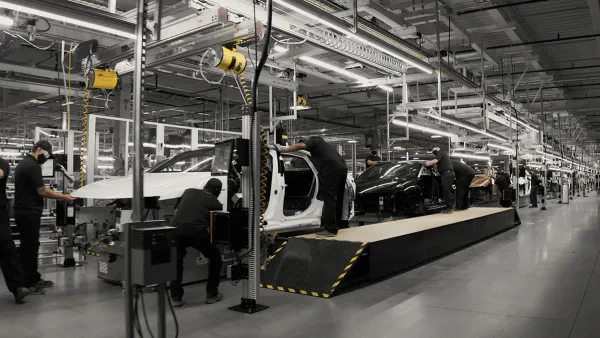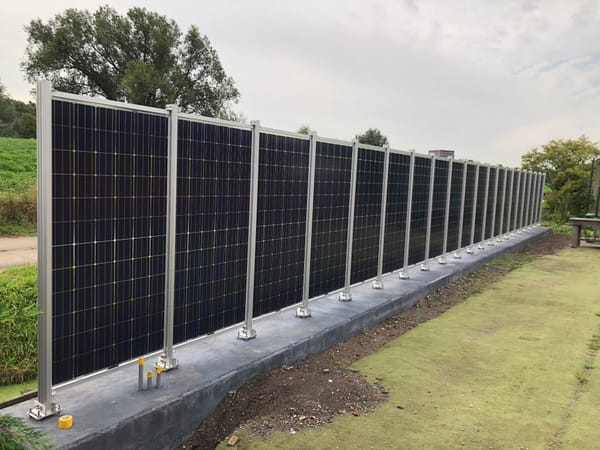India prepares to wean off coal, while American transmission clogs up
After China, India has the second largest coal-fired base of electricity, with an additional 28 gigawatts of capacity under construction or in planning stages. But Reuters reports the country’s cabinet has voted to cap future coal power generation once
Chart of The Day

1. After heat wave, India decides coal isn’t cool
After China, India has the second largest coal-fired base of electricity, with an additional 28 gigawatts of capacity under construction or in planning stages. But Reuters reports the country’s cabinet has voted to cap future coal power generation once the currently planned plants are completed. India has been under intense pressure from global climate negotiators to reduce its carbon output, most of which can be attributed to coal. Working with China, India has been one of the main blocks to climate negotiators setting a fossil fuel “end date”. Recent climate change-driven heat waves in northern India may have possibly changed national leaders’ minds.
- 43% of India’s energy consumption was from coal in 2020. In contrast, only 5.1% of the U.S.’s total energy consumption was from coal that same year.
- A study by India’s central bank found that transition to green energy by 2030 would cost over US$1 trillion. Currently only 3% of all Indian power comes from renewables.
Sources: Reuters / Climate Home News / Guardian
2. New York State gets into the renewables game
The State of New York passed legislation last week that would allow a state agency to build publicly-owned renewable energy projects, putting it in direct competition with independent and utility-owned projects in the state. Touted as a way to construct more renewables, faster, in the state, as well as to ensure renewables are constructed by union labor, a collection of environmental groups decried the legislation, saying that the state’s real problem is a lack transmission capacity and “an interconnection process that takes too long and is too expensive.”
- The new law requires publicly-owned fossil fuel-driven peaker plants to be decommissioned by 2030.
- Previously passed New York law directs 70% of the state’s electricity to come from renewables by 2030, followed by a 100% carbon-free power grid by 2040.
Sources: EnergyWire / Grist
3. Storage isn’t in the bag
Wind and solar energy are great, but they usually don’t generate power during peak periods of demand, plus increased stress on local grids due to higher electricity demand is prompting utilities to use more rolling blackouts. The solution to both of those problems is energy storage, but there isn’t enough battery production in the world to satisfy storage needs. So, companies are turning to all manner of solutions, like heating rocks with solar during the day and using the hot rocks later to heat steam for turbines. Another idea: putting weights in old oil wells, which are cranked to the top with solar during the day, and then drive a turbine as they slowly descend miles deep at night.
- Here’s a nifty video explainer of various energy storage concepts.
Sources: NPR / New York Times
4. America’s clogged electricity transmission system
While a recent survey shows that an overwhelming majority of Americans would like a solar or wind project to power their community, over 1,350 GW of generation and an estimated 680 GW of storage capacity is waiting for interconnection approvals to the grid, according to a recent study. Interconnection waits in the U.S. take a median of 5 years today. Unless the delays are solved soon, the U.S. Department of Energy estimates the U.S. won’t be able to make even half of its 2030 clean energy pledges. To fix the problem, America needs to expand transmission capacity by 60% by 2030 and triple it by 2050.
- One recently approved $6 billion transmission line from Quebec to Queens took 15 years for approval.
- Europe is struggling too. Average permitting time for new transmission lines is 9 years.
- Locally, small U.S. towns are finding it cheaper to build and operate their own municipal grids, than to rely on previously built utility systems.
Sources: Reuters / US DOE / Lawrence Berkeley National Lab
Other Things Happened
Verra, world’s leading carbon credits certifier, promised a new system to manage verification of its credits after an investigation found 90% of rainforest credits to be worthless, but a new system announced last week doesn’t seem to be much of an improvement. Barcelona FC’s various soccer, field hockey and handball teams will now start riding the train rather than a private jet for short distance trips. Rather than limiting growth, Arizona cities are preparing to spend hundreds of millions of dollars on water recycling, deeper wells, and water imports. Massachusetts issued an RFP for 3.6 GW of offshore wind capacity.
You made it to the end! Here’s a great art video.





